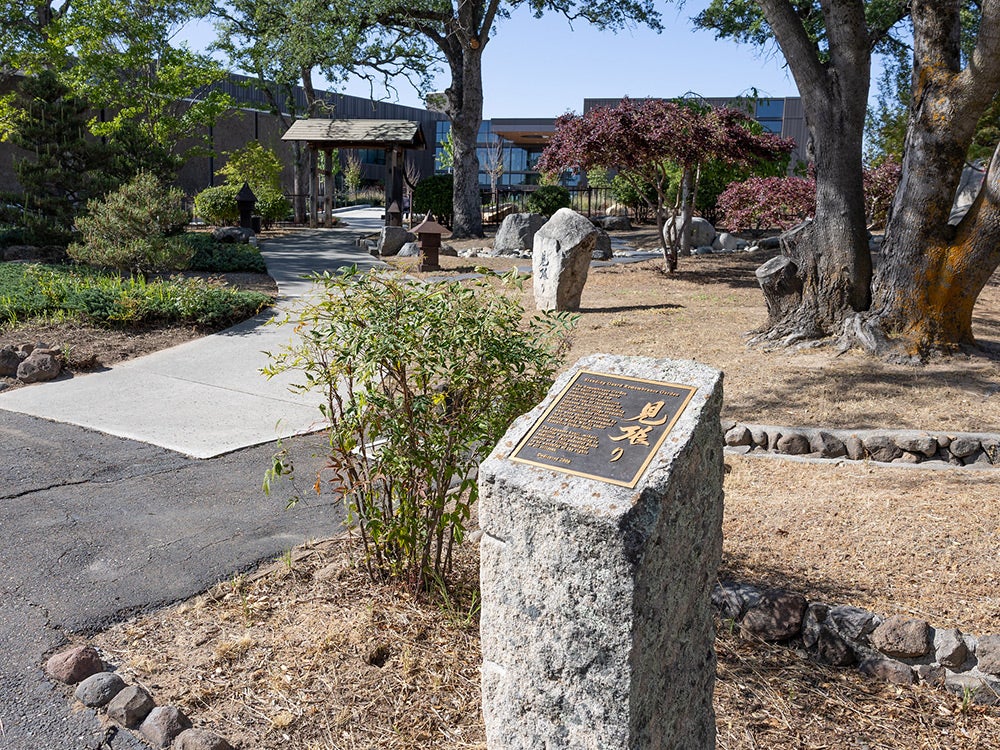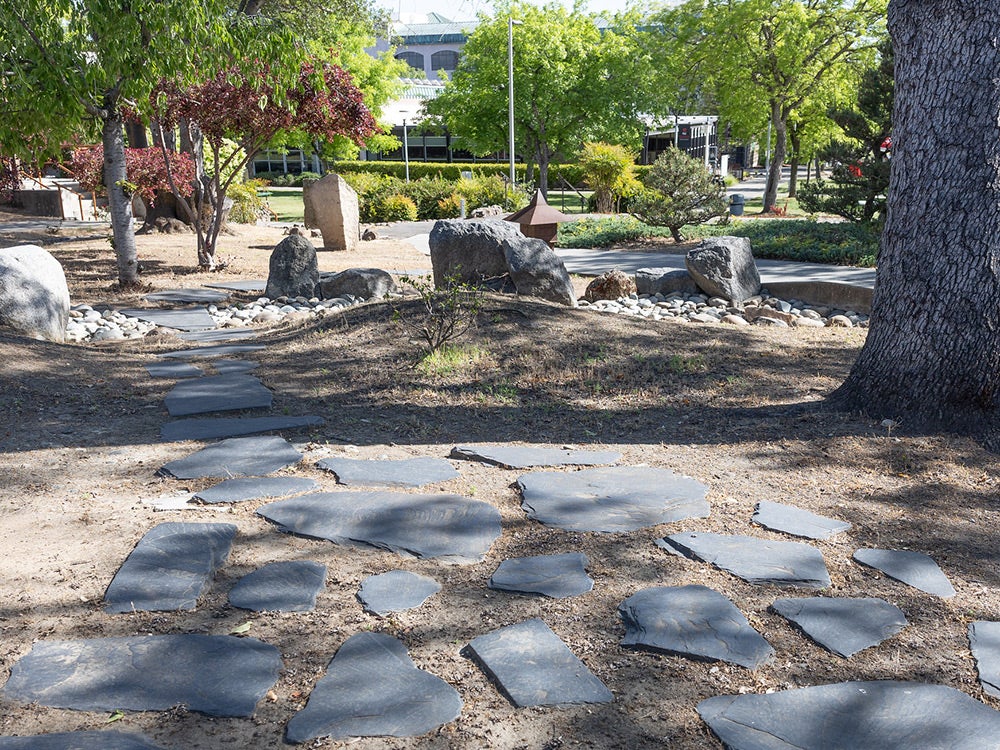
Standing Guard Garden
A Quiet Refuge for Remembrance
The creation of the Japanese Garden on the Rocklin Campus is the most lasting legacy from the Standing Guard Project. The garden is a remembrance and quiet refuge that serves as a reminder to protect the civil rights of all Americans.
Hiroshi Matsuda, a local ceramic and bonsai artist, worked with a committee of college and community volunteers to design the environmentally-sensitive garden to reflect Japanese and American cultural influences. The enclosed garden includes a stone bridge, dry waterfall, rock garden, rock stream bed and lanterns set among the native oaks and other plants. The central feature is a prominent gate that students can walk through, which symbolizes their educational transition.
You can find the Standing Guard Garden location on our Rocklin campus map.
About the Standing Guard Project
The Standing Guard Project commemorates the World War II Japanese American internment, including the lessons that event taught us about the necessity of protecting and upholding the Constitutional rights of all United States citizens. It’s not simply about remembering the forced internment of Japanese American citizens, but also about education and awareness.
The signing of Executive Order 9066, signed six weeks after the bombing of Pearl Harbor, authorized the internment of Americans with Japanese ancestry. It was driven by fear and racism, and justified as military necessity. Due process for American citizens was abandoned despite opposition to the Order. In Placer County, almost 2,000 Japanese Americans were relocated and confined at Camp Tulelake, which grew to nearly 20,000 people from the West Coast.


